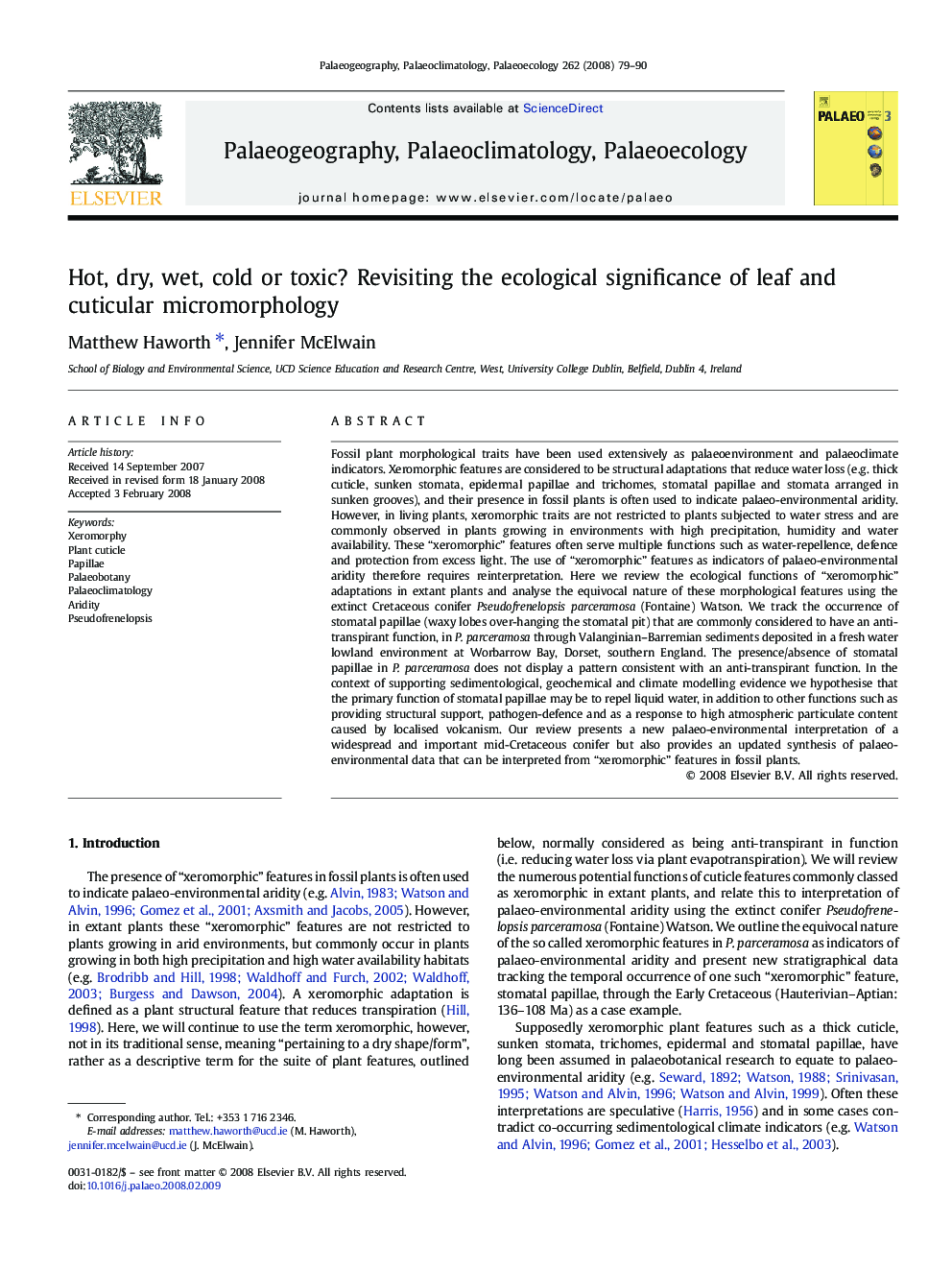| کد مقاله | کد نشریه | سال انتشار | مقاله انگلیسی | نسخه تمام متن |
|---|---|---|---|---|
| 4468597 | 1622330 | 2008 | 12 صفحه PDF | دانلود رایگان |

Fossil plant morphological traits have been used extensively as palaeoenvironment and palaeoclimate indicators. Xeromorphic features are considered to be structural adaptations that reduce water loss (e.g. thick cuticle, sunken stomata, epidermal papillae and trichomes, stomatal papillae and stomata arranged in sunken grooves), and their presence in fossil plants is often used to indicate palaeo-environmental aridity. However, in living plants, xeromorphic traits are not restricted to plants subjected to water stress and are commonly observed in plants growing in environments with high precipitation, humidity and water availability. These “xeromorphic” features often serve multiple functions such as water-repellence, defence and protection from excess light. The use of “xeromorphic” features as indicators of palaeo-environmental aridity therefore requires reinterpretation. Here we review the ecological functions of “xeromorphic” adaptations in extant plants and analyse the equivocal nature of these morphological features using the extinct Cretaceous conifer Pseudofrenelopsis parceramosa (Fontaine) Watson. We track the occurrence of stomatal papillae (waxy lobes over-hanging the stomatal pit) that are commonly considered to have an anti-transpirant function, in P. parceramosa through Valanginian–Barremian sediments deposited in a fresh water lowland environment at Worbarrow Bay, Dorset, southern England. The presence/absence of stomatal papillae in P. parceramosa does not display a pattern consistent with an anti-transpirant function. In the context of supporting sedimentological, geochemical and climate modelling evidence we hypothesise that the primary function of stomatal papillae may be to repel liquid water, in addition to other functions such as providing structural support, pathogen-defence and as a response to high atmospheric particulate content caused by localised volcanism. Our review presents a new palaeo-environmental interpretation of a widespread and important mid-Cretaceous conifer but also provides an updated synthesis of palaeo-environmental data that can be interpreted from “xeromorphic” features in fossil plants.
Journal: Palaeogeography, Palaeoclimatology, Palaeoecology - Volume 262, Issues 1–2, 27 May 2008, Pages 79–90